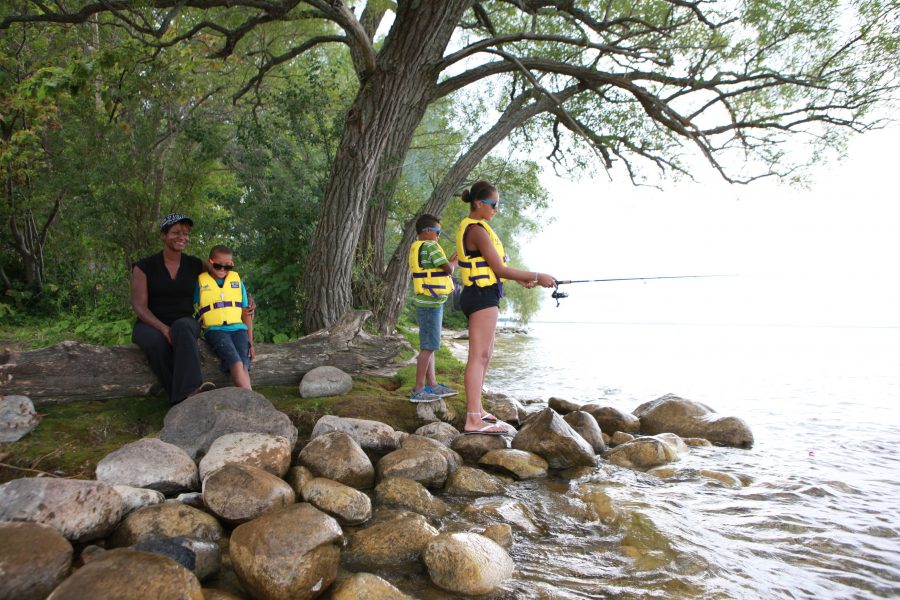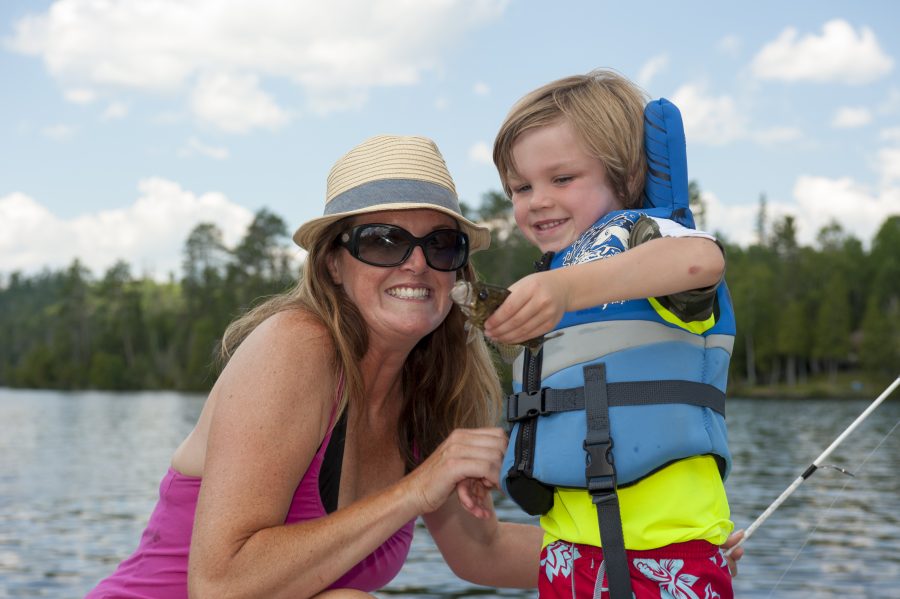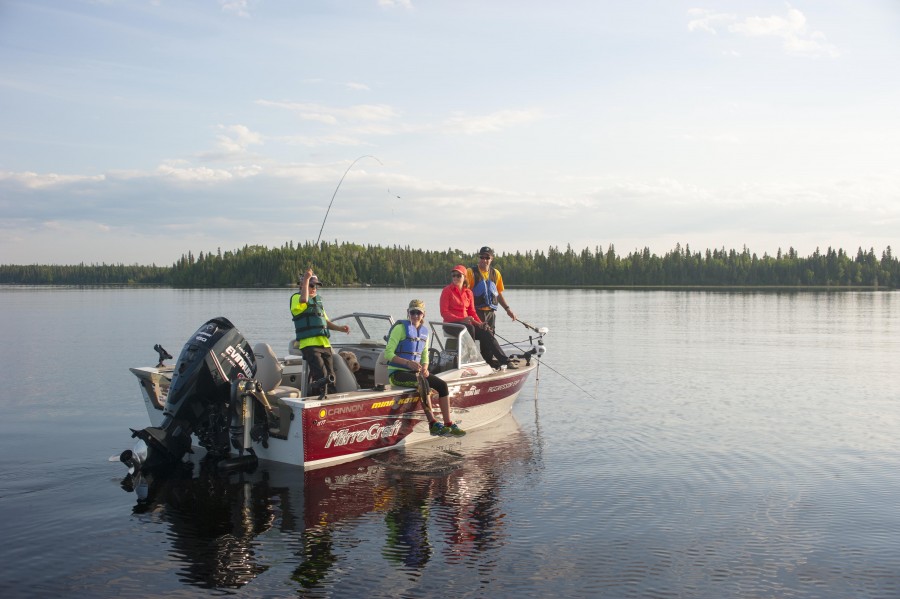Today’s post comes from year-round multispecies angler and writer Ashley Rae of SheLovesToFish.com.
Fishing is a wonderful year-round activity that can be enjoyed at any age.
It’s a sport that doesn’t require much: you can get by with some basic tackle and fish from shore, or you can dive right in gearing-up with all the latest and greatest equipment and watercraft.
When introducing newcomers to the sport, there are a few key points to keep in mind that will ensure an enjoyable and memorable experience for all.
1. Go at their pace

If you’re an angler already, chances are you don’t mind being out on the water from dawn until dusk in any type of weather. When introducing someone new to the sport, it’s best to go at their pace.
If you can, select a day with nice weather and even scout out a fishing spot in advance to locate some fish. Fishing isn’t all about catching fish, but it sure makes it fun when the trip is successful. Catching your first fish is a memory that lasts a lifetime.

For newcomers, panfish are great species to start with especially during spring when they’re typically stacked up in the shallows within easy reach from shore.
Panfish can often be found in great numbers offering plenty of action and they can be caught on basic equipment.
2. Keep comfort in mind
It’s no fun shivering or having a rumbling stomach while out on the water, and it can sure cut the day short.
Ensure your guests are dressed for the weather and have enough food, snacks, and refreshments to last the duration of the trip.

Sunglasses are not only useful for eye protection from UV rays, but can also help shield eyes when new anglers are learning to cast and lures are flying about.
As a side note, sunglasses with polarized lenses can also make it easier to spot fish underwater by reducing the amount of glare on the water’s surface.
3. Gear up in advance
Be sure you have all the equipment and tools needed for the type of fish you’re targeting, as well as the proper license.
Learning how to cast, tie knots, and use a reel can be overwhelming for someone who’s never done it before.
Having all the gear ready in advance saves time and means you can help them get fishing right away. They’ll enjoy learning more about the process as the day goes on, especially after they start catching fish.
Need a refresher on what to bring on your fishing trip?
4. Keep it simple
Float (bobber) fishing is a great introduction as it’s very visual and it’s how many anglers got started.
Learning to feel the bite can be tricky for some, so actually seeing the float go down helps to teach when to set the hook. No matter how much time you’ve spent fishing, it’s always so much fun seeing that float go down!

Spincast and spinning reels are great styles to start with for beginners and can easily support casting tiny jigs and lures used for panfish.
5. Keep it fun
Holding/unhooking a fish or baiting a hook for the first time may be intimidating to some, especially young children.
Don’t get hung up if they’re nervous to try at first and always be patient.

Lead by example and ensure good fish care, not keeping the fish you don’t plan to keep out of the water too long.
I’ve found that bringing a bucket along or filling up the live well and placing a couple fish inside allowing them to get a closer look is not only a great opportunity to learn about these species, but also takes some intimidation away.
You could also show them this video, so they know what to expect:
Planning to cook your catch? Use the Ontario Fish Guide to find out which species are suitable to eat.
6. Extend the invite
Don’t forget about your grandparents or others in your life that may be young-at-heart.
There are plenty out there who would love the opportunity at spending time out on the water.

I can assure you that these types outings tend to create memories neither of you will soon forget.
7. Take a Learn to Fish program
Not sure you’re the right instructor for the would-be anglers in your life? Sign up for a free Learn to Fish program.
During these two-hour, all-ages sessions, friendly instructors explain how to use fishing equipment and share some basic tips about fish identification and anatomy. Instructors demonstrate how to fish legally, safely and sustainably.
Next, participants head to the shoreline. Rods, reels, bait and PFDs are provided, as well as a one-day fishing licence for adults. Learn to Fish instructors spend an hour supervising and supporting new anglers as they try out their new skills.
Want to sign up? Find a Learn to Fish program near you.
